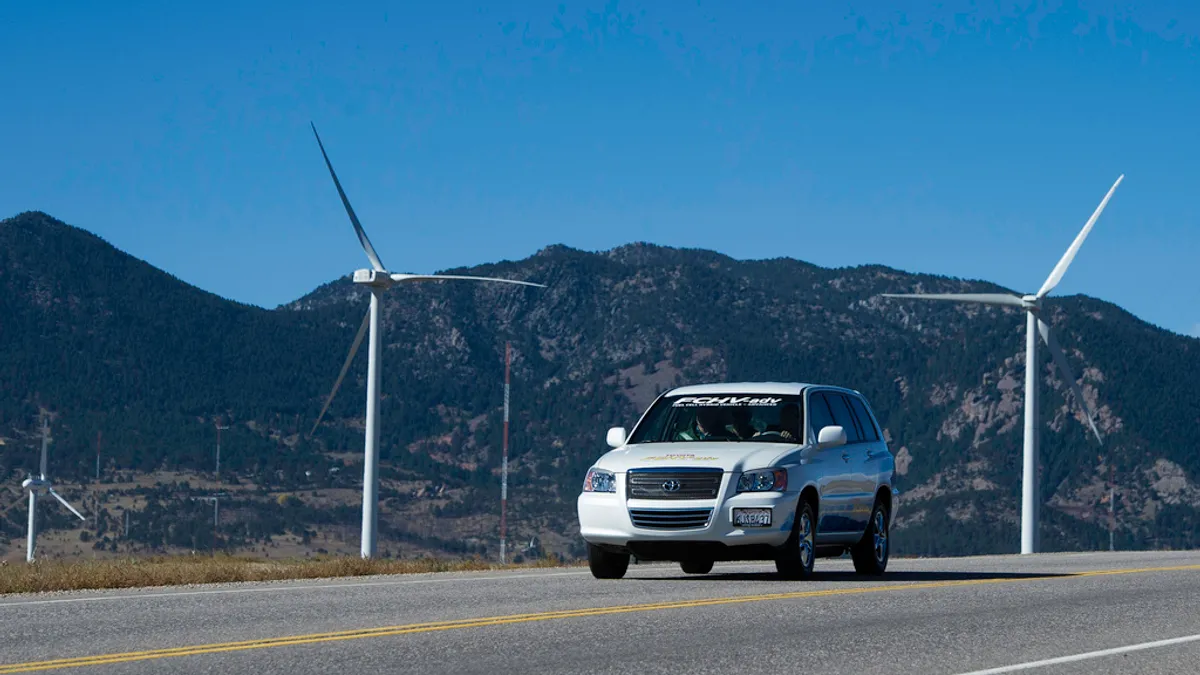Dive Brief:
- Facing a potential gap in the number of installed electric vehicle chargers needed to meet the state's clean transportation goals, the California Public Utilities Commission released proposed rules to guide near-term priorities for utilities investing in charging infrastructure.
- The proposed decision, released Monday, offers state utilities more flexibility in what infrastructure they can deploy before 2025 and provides for a streamlined application process.
- The PUC also laid out principles the utilities should follow to ensure equity in their EV infrastructure rollout, including a requirement that utilities target at least 50% of their infrastructure or expenditure for customers in underserved communities. The decision also says plans should be coordinated with community-based organizations and that installed infrastructure be accessible to all community members.
Dive Insight:
California has a goal to deploy 5 million zero-emission vehicles by 2030 and 250,000 light-duty or passenger ZEV chargers by 2025. In September 2020, Gov. Gavin Newsom also issued an executive order requiring that all new cars and trucks sold in-state be ZEVs by 2035 and that all new medium- and heavy-duty trucks be ZEVs by 2045. A May report by the California Energy Commission found that at the start of 2021, California had installed more than 70,000 public and shared chargers with another 123,000 planned. However, that left a gap of about 57,000 installations, including 430 fast chargers, from the state's goal.
In February 2020, the PUC proposed a transportation electrification framework (TEF) that would require state utilities to write 10-year plans on how they would invest in electrification infrastructure. Those plans would include details on how utilities would use ratepayer money on chargers and how to handle incremental load from the new fleet of EVs.
The proposed decision applies to one section of the plan and responds to concerns raised by utilities, environmentalists and EV advocates that the framework could actually slow down the state's electrification goals. Under the proposal, utilities would file their 10-year plans in 2021, then file formal applications for their investments in the first quarter of 2023 if they were approved. Comments from several stakeholders said that could limit the investments utilities could make before their plans are approved, effectively freezing progress on EV infrastructure installation.
The latest proposal gives utilities the ability to file an advice letter for a streamlined approval process for certain projects, capped at $20 million per project (utilities are capped at $80 million total in projects through that process) with a more formal process for larger projects done before 2025. That, said Natural Resources Defense Council attorney Miles Muller, would allow for "programs that are much broader in size and scope" in the next five years.
"Expanding access to electric vehicles (EVs) and charging stations is essential to reducing emissions, improving air quality and meeting California state goals," utility Pacific Gas & Electric said in a statement. "PG&E is committed to continuing our efforts to increase EV adoption and looks forward to working with the CPUC and other stakeholders on this important work."
Stakeholders can now comment on the proposed decision. The PUC is still working through other sections of the TEF, including more details on how the body will review and assess the utilities' plans, with proposals expected before the end of the year.
The latest proposed decision also says the utilities' plans must be "equitable and ... address environmental justice concerns," reflecting the state's focus on ensuring that the benefits of electric transportation reach underserved communities. That includes requirements that the plans spell out incentives and rebates and outreach, as well as proposals to offset the costs of upgrading residential service for installation of level 2 chargers in neighborhoods with high poverty rates. The guidance also lays out a renewed focus for installing charging infrastructure for heavy-duty trucks and freight vehicles in low-income neighborhoods that have traditionally seen higher levels of pollution.
"Our state's vehicles, and in particular our trucks and buses, do not drive uniformly throughout the state. We have transit corridors, warehouse hubs and other things that concentrate polluting vehicles in our most vulnerable communities," said Michael Colvin, director of regulatory and legislative affairs for the Environmental Defense Fund's California Energy Program. "The decision appropriately recognizes that prioritizing them will have an outsized positive impact."














